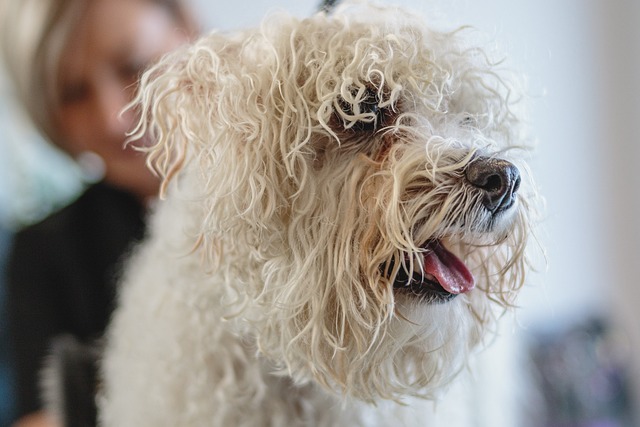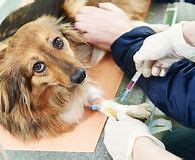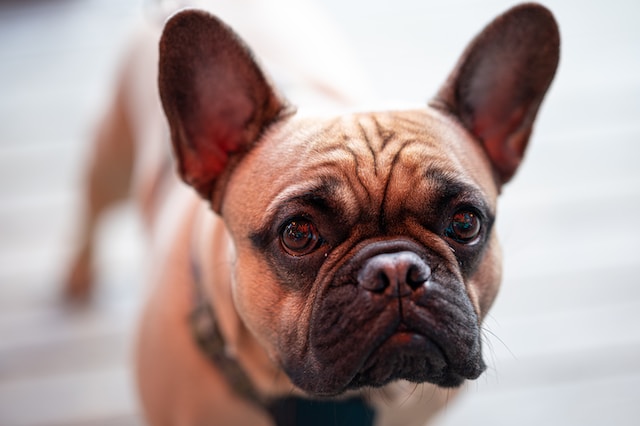How Often Do Dogs Go into Heat? The Essential Guide (2023)

How often do dogs go into heat? It’s a question that many dog owners wonder about, especially if they are considering breeding their pet or if they are concerned about accidental pregnancies. Well, the frequency of a dog’s heat cycle can vary depending on a few factors, such as breed, size, and individual differences.
Generally, female dogs go into heat, or estrus, approximately twice a year. However, this can range anywhere from once every four months to once every twelve months. Smaller breeds tend to have more frequent cycles, while larger breeds may have longer intervals between heats.
In this article, we’ll dive deeper into the topic of dog heat cycles and explore the signs and behaviors to look out for when your furry friend is in heat. We’ll also discuss the importance of spaying your dog and share tips for managing heat cycles, whether you plan to breed or not. So if you’re ready to learn more about this fascinating aspect of dog biology, keep reading!
What is the Heat Cycle in Dogs?
The heat cycle, also known as estrus or “being in heat,” is a reproductive stage that female dogs go through. It is a natural part of their reproductive cycle and typically occurs every six to twelve months. During this period, the dog is fertile and may exhibit various physical and behavioral changes signaling their readiness to mate.
Average Duration of a Dog’s Heat Cycle
The heat cycle, also known as estrus, is the reproductive cycle in female dogs. It is during this time that a female dog is fertile and can become pregnant. The average duration of a dog’s heat cycle can vary, but it typically lasts around 2-3 weeks. However, it’s important to note that the length of the heat cycle can be influenced by factors such as breed, individual variations, and overall health. Understanding the different stages of the heat cycle can help dog owners better manage their pet’s reproductive health.
Signs and Symptoms of a Dog in Heat
- Swelling of the vulva: One of the earliest signs of a dog in heat is swelling of the vulva. It becomes larger and more prominent than usual.
- Bloody discharge: Dogs in heat typically experience a bloody discharge from the vulva. The color and consistency may vary throughout the heat cycle.
- Increased urination: Female dogs may urinate more frequently during heat as a result of hormonal changes.
- Changes in behavior: Dogs in heat may exhibit changes in behavior, such as restlessness, increased affection, or being more vocal.
- Attracting male dogs: Female dogs in heat release pheromones that attract male dogs. They may be more interested in interacting with male dogs and may try to escape or roam to seek a mate.
- Flagging: Flagging is a behavior where a female dog lifts her tail to one side to expose her swollen vulva. This is a sign that she is receptive to mating.
- Changes in appetite: Some female dogs may experience a decrease in appetite, while others may have an increased appetite during heat.
- Changes in posture: Dogs in heat may adopt a “lordosis” posture, where they lower their front end and lift their hind end when approached by a male dog.
If you suspect your dog is in heat or have any concerns about her reproductive cycle, it is recommended to consult with a veterinarian for further guidance and advice.
Canine Reproduction and Fertility
The Reproductive Cycle of Female Dogs
Female dogs go through a reproductive cycle known as the estrous cycle. This cycle consists of distinct phases, including proestrus, estrus, diestrus, and anestrus. During proestrus, the female dog experiences vaginal bleeding and prepares for mating. Estrus is the fertile period where the female is receptive to males and can conceive. Diestrus follows estrus and is characterized by hormonal changes and the possibility of pregnancy. Anestrus is the resting phase before the cycle begins again.
Mating and Fertilization
Mating in dogs typically occurs during the estrus phase of the female’s reproductive cycle. Male dogs are attracted to the pheromones released by the female and attempt to mount her. Successful mating involves the male’s penis becoming erect and his sperm being deposited in the female’s reproductive tract. Fertilization occurs when a sperm fertilizes an egg, leading to the formation of an embryo.
Pregnancy and Gestation
If fertilization is successful, the female dog becomes pregnant. Canine gestation typically lasts around 63 days, although it can vary slightly. During pregnancy, the female’s body undergoes various changes to support the developing puppies. It is important to provide proper nutrition, regular veterinary care, and ensure a comfortable environment for the pregnant dog.
Whelping and Care of Newborn Puppies
Whelping is the term used to describe the process of a female dog giving birth to puppies. The timing of whelping can vary, but it generally occurs around 63 days after mating. During whelping, the female experiences contractions and delivers the puppies. The mother dog plays a crucial role in caring for her newborn puppies, providing them with warmth, milk, and grooming. Proper care, including regular veterinary check-ups, vaccination, and socialization, is important for the well-being of the mother and her puppies.
Factors Affecting the Frequency of Heat Cycles in Dogs
- Age: The frequency of heat cycles in dogs can vary depending on their age. Typically, female dogs will start having heat cycles around six to twelve months of age.
- Breed: Different dog breeds may experience variations in the frequency of heat cycles. Some breeds may have heat cycles every six months, while others may have them once a year.
- Size: The size of a dog can also affect the frequency of heat cycles. Smaller breeds tend to have more frequent heat cycles, while larger breeds may have longer intervals between cycles.
- Health: The overall health of a dog can impact the frequency of heat cycles. Illnesses, hormonal imbalances, or underlying medical conditions may disrupt the normal cycle, causing irregularities or absence of heat cycles.
- Spaying: Female dogs that have been spayed will no longer experience heat cycles. Spaying is a surgical procedure that removes the uterus and ovaries, preventing the dog from going into heat.
It’s important to note that individual dogs may have variations in their heat cycles, and consulting with a veterinarian can provide more specific information about a dog’s reproductive health and cycle.
How Often Do Dogs Typically Go into Heat?
The frequency of a female dog going into heat, also known as estrus, can vary. On average, dogs go into heat every six to eight months. However, this can depend on factors such as breed, size, and individual variations. Smaller breeds tend to have more frequent heat cycles, often every four to six months, while larger breeds may have longer intervals between heats. It’s important for dog owners to be aware of the signs of heat in their female dogs and take appropriate measures to prevent unplanned pregnancies or manage their dog’s reproductive cycle.
Abnormal Heat Cycles in Dogs
What is an Abnormal Heat Cycle?
An abnormal heat cycle, also known as an estrous cycle, refers to any variation from the typical reproductive cycle in female dogs. Dogs generally have two heat cycles per year, but certain factors can cause them to deviate from this regular pattern. It is important for dog owners to understand the causes behind abnormal heat cycles and how to identify and manage them.
Possible Causes of Abnormal Heat Cycles
Various factors can contribute to abnormal heat cycles in dogs. These include hormonal imbalances, underlying health conditions, stress, certain medications, and even external factors such as changes in daylight hours. It is crucial to identify the underlying cause of the abnormal heat cycle to ensure appropriate management and treatment.
Signs and Symptoms of Abnormal Heat Cycles
Recognizing the signs and symptoms of an abnormal heat cycle is essential for dog owners to seek veterinary care and provide necessary support to their pets. Common signs may include irregular timing of heat cycles, prolonged heat periods, behavioral changes, excessive bleeding or discharge, and changes in appetite or energy levels. It is important to monitor your dog closely and consult with a veterinarian if you suspect an abnormal heat cycle.
Managing Abnormal Heat Cycles
The management of abnormal heat cycles in dogs depends on the underlying cause and the individual dog’s needs. Treatment options may include hormonal therapy, dietary adjustments, stress reduction techniques, or the removal of external factors contributing to the abnormal cycle. It is crucial to work closely with a veterinarian to develop an appropriate management plan that considers the health and well-being of the dog.
Consulting a Veterinarian
If you suspect your dog is experiencing an abnormal heat cycle, it is always recommended to consult with a veterinarian. They can conduct a thorough examination, perform necessary tests, and provide personalized advice and treatment options based on the specific needs of your dog. Early detection and intervention are key in managing abnormal heat cycles and ensuring the overall health and welfare of your furry companion.
When to Consult a Veterinarian
As a pet owner, it is important to know when to consult a veterinarian for the health and well-being of your furry friend. While some issues may resolve on their own or with simple at-home remedies, there are certain situations that warrant professional veterinary care. Here are some instances when it is advisable to seek guidance from a veterinarian:
- Severe or Prolonged Symptoms: If your pet is experiencing severe or prolonged symptoms, such as vomiting, diarrhea, difficulty breathing, or sudden changes in behavior, it is best to consult a veterinarian. These could be signs of a more serious underlying condition that requires medical attention.
- Injury: In the event of an injury, such as a broken bone, deep cut, or significant trauma, immediate veterinary care is essential. Prompt treatment can help prevent further complications and ensure proper healing.
- Loss of Appetite: If your pet suddenly loses their appetite and refuses to eat for more than a day, it may indicate an underlying health issue. A veterinarian can assess the situation and determine the best course of action.
- Unexplained Weight Loss or Gain: Significant and unexplained weight loss or gain can be a cause for concern. A veterinarian can help identify the underlying cause and recommend appropriate treatment or dietary adjustments.
- Changes in Urination or Defecation: Any noticeable changes in your pet’s urination or defecation habits, such as frequent accidents, difficulty urinating, blood in the urine, or diarrhea, should be evaluated by a veterinarian. These could be signs of a urinary tract infection, gastrointestinal issue, or other health problem.
- Skin Problems: If your pet has persistent skin issues, such as rashes, sores, excessive itching, or hair loss, it is important to consult a veterinarian. Skin problems can be indicative of allergies, infections, or underlying medical conditions that require treatment.
Remember, it is always better to err on the side of caution when it comes to your pet’s health. If you are in doubt or have any concerns about your pet’s well-being, don’t hesitate to reach out to a qualified veterinarian for guidance and support.
Conclusion
Understanding the heat cycle in dogs is essential for pet owners to manage their dog’s reproductive health. Female dogs typically go into heat every six to eight months, but this can vary depending on factors such as breed, size, and individual variations. It’s important to be aware of the signs and symptoms of a dog in heat, including swelling of the vulva, bloody discharge, changes in behavior, and attracting male dogs.
Abnormal heat cycles can occur due to hormonal imbalances, underlying health conditions, stress, medication, or external factors. If you suspect your dog is experiencing an abnormal heat cycle, it’s crucial to consult with a veterinarian for proper diagnosis and management.
In general, it’s important to be proactive in managing your dog’s reproductive health, whether you plan on breeding or not. Spaying your dog can prevent heat cycles altogether and help reduce the risk of certain health problems.
Remember, if you have any concerns or questions about your dog’s heat cycle, it’s best to consult with a veterinarian who can provide personalized advice and guidance based on your dog’s specific needs.
By staying informed and seeking professional advice when needed, you can ensure the well-being and reproductive health of your beloved canine companion.






